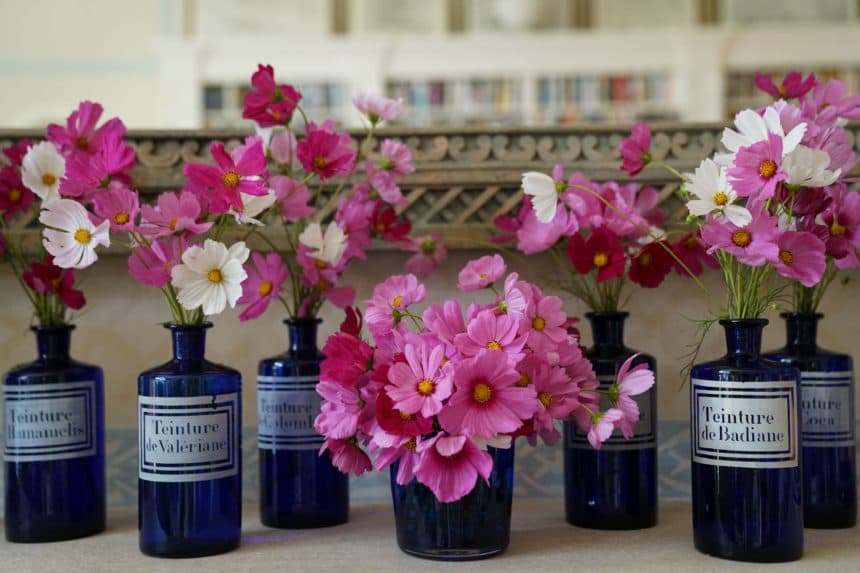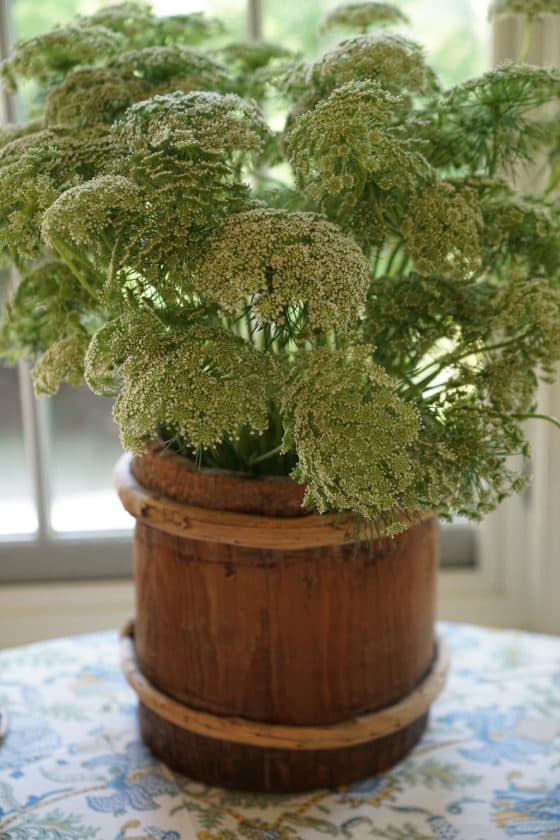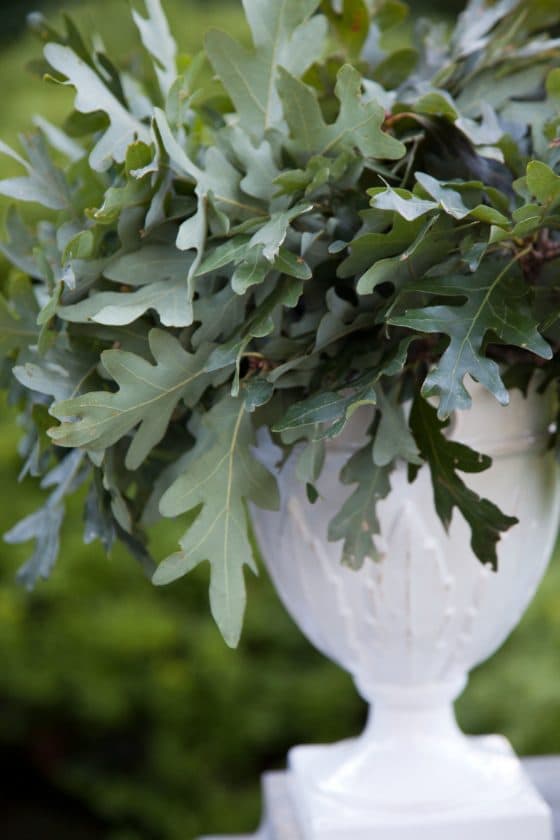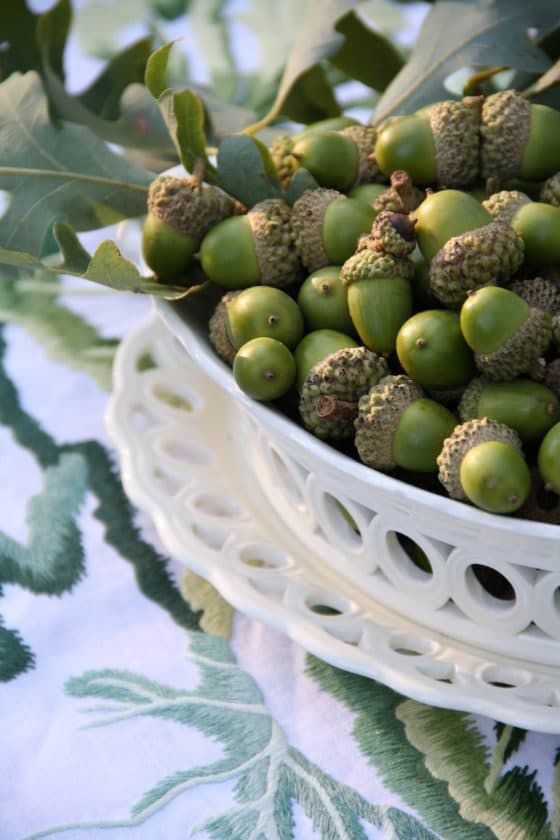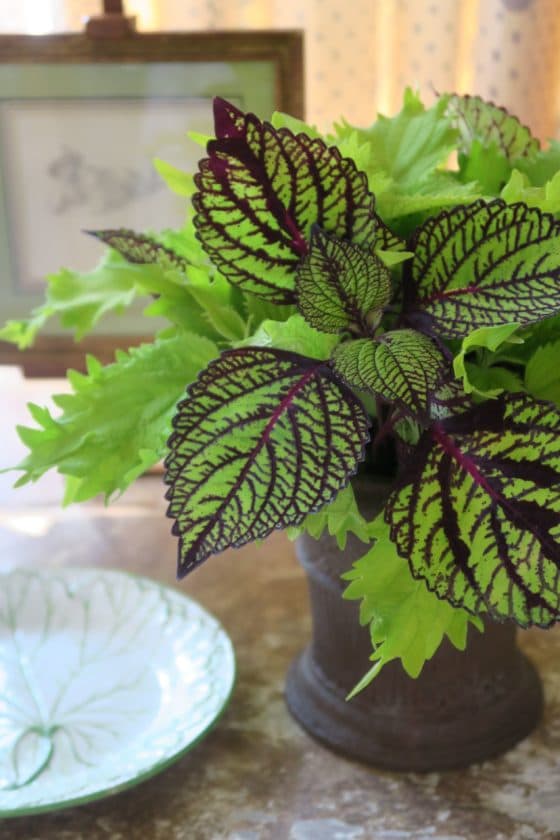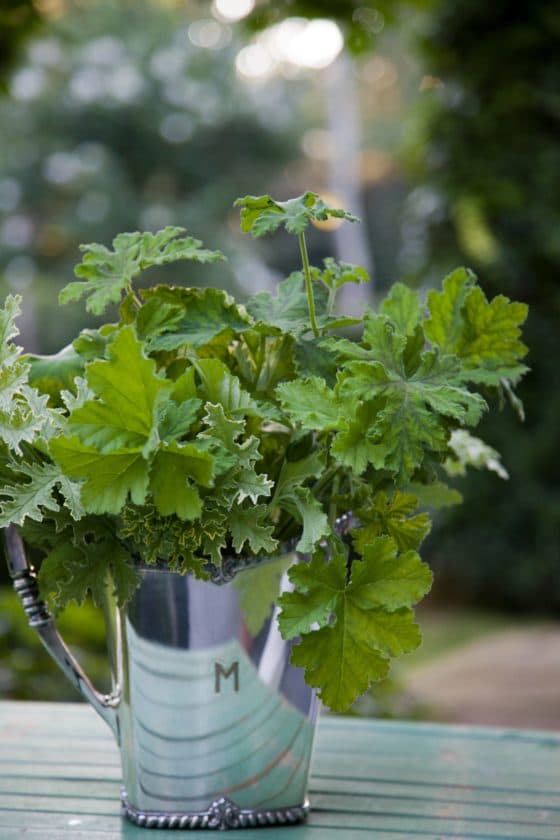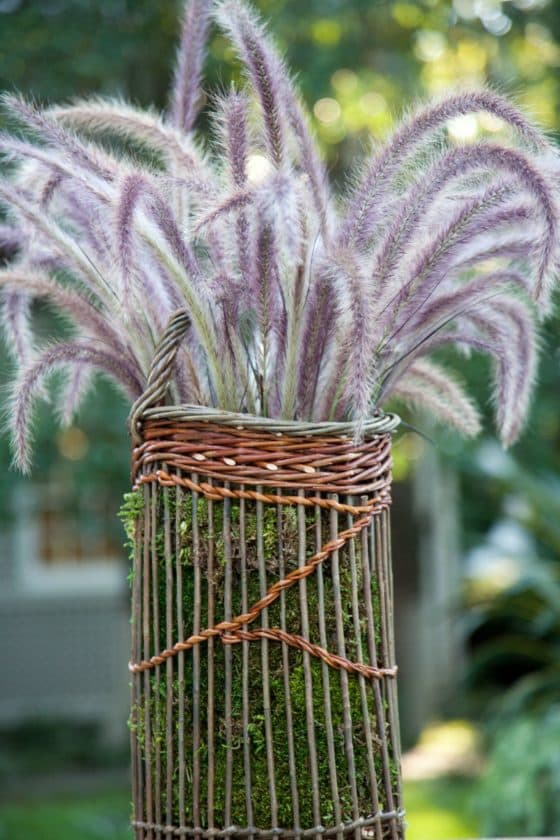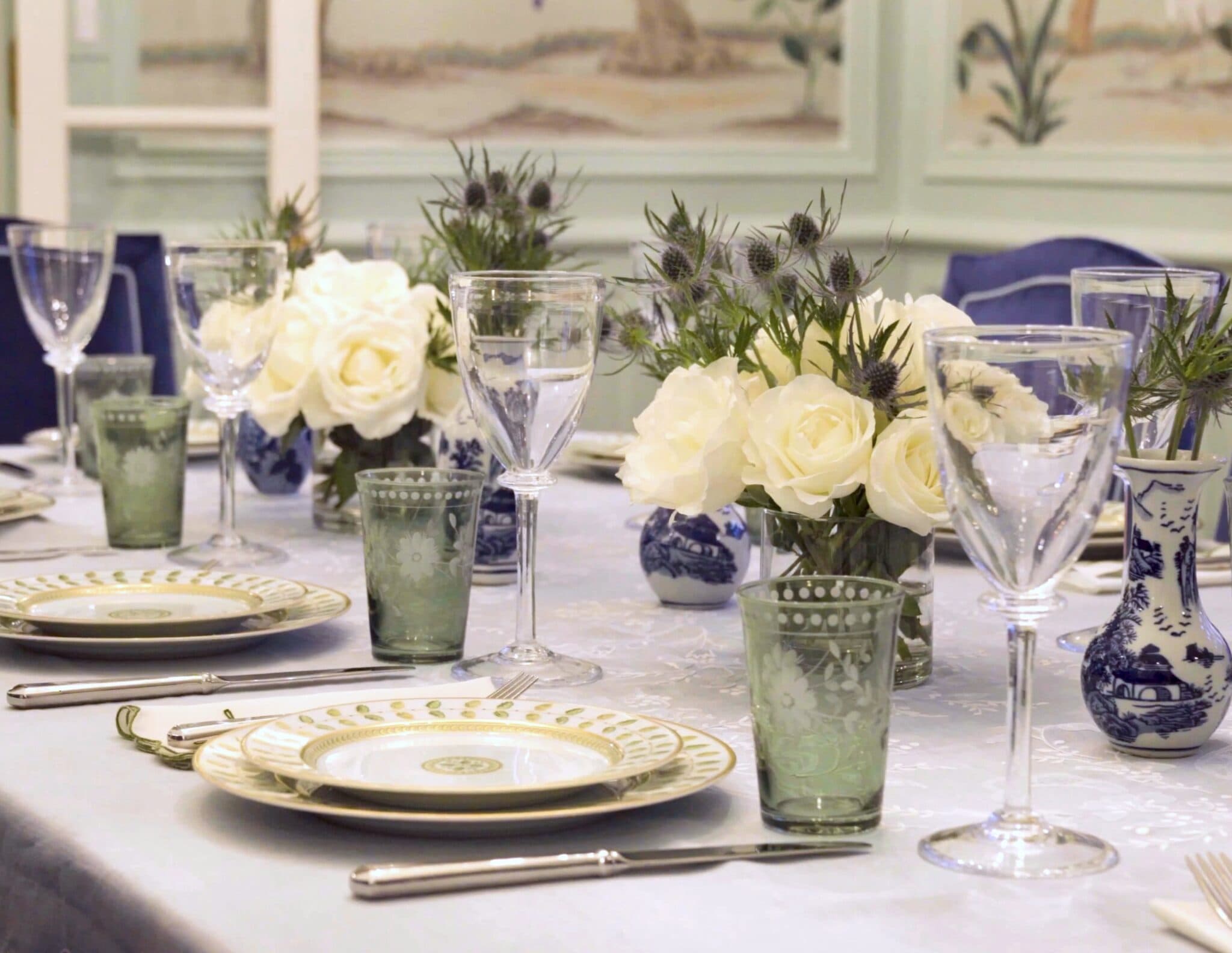After a long hard winter, we’re all in need of a little floral support—and who better to show us the way than decorating doyenne and gardening connoisseur Charlotte Moss. In her 11th book, Charlotte Moss Flowers (Rizzoli), the New York-based designer shares ten years’ worth of botanical arrangements that range from lush and lavish to sweet and simple. In addition to this visual feast, Moss takes readers on a deep dive into floral history, touching on the styles of iconic tastemakers and groundbreakers like Constance Spry and Bunny Mellon.
Here at The Edit, we were particularly drawn to her use of modest blooms and everyday foliage—think bushels of baby’s breath and urns of verdant oak leaves—to create truly extraordinary arrangements. We hopped on the phone with Moss to get the scoop on how she works her magic.
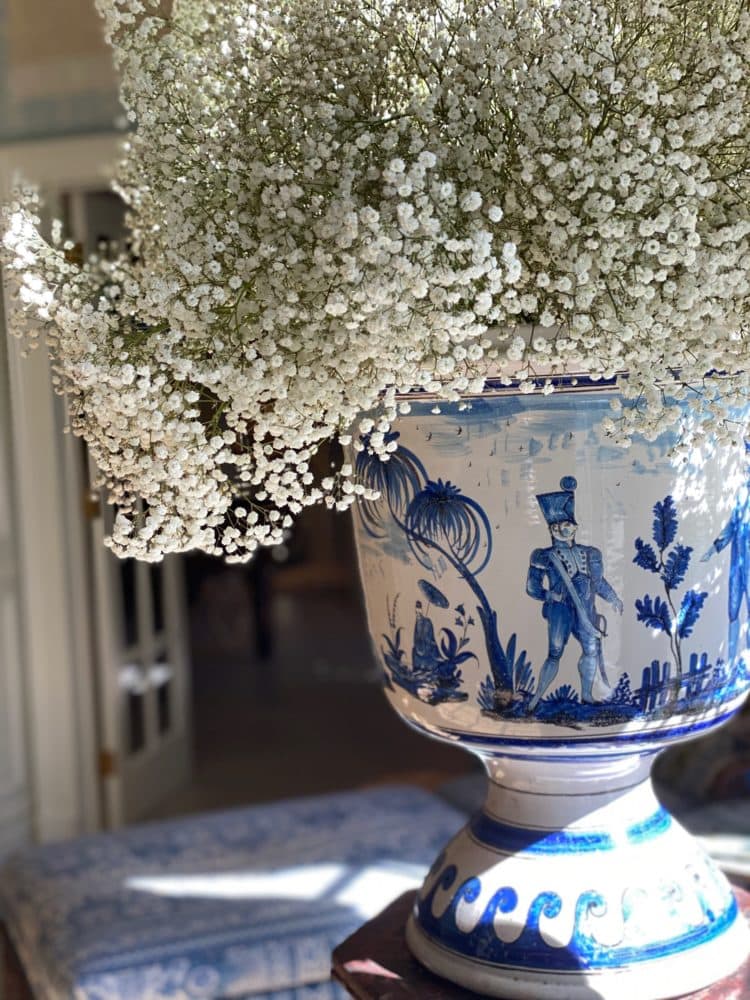

Charlotte Moss Flowers, $50. rizzoli.com.
• • •
Tell us why you decided to write about flowers.
I have been photographing flower arrangements in the city and country for as long as I can remember. I think it’s part of my interest in keeping track of my life, chronicling things so that one day when I’m in a rocking chair I can look back at all the stuff that I did—I’m sort of a Miss Havisham when it comes to collecting.
It really became clear to me when I looked at all the pictures that everything was about simplicity. It’s about using what you have, whatever is in season, and don’t obsess about what you don’t have. It made me think that maybe there’s a message in all of this—it doesn’t have to be about spending a lot of money at the florist, but rather about taking the time and doing it.
That’s such a great point, especially in the time we’re living in.
I think that’s an important lesson of life—it’s about using whatever is on hand. So if there’s nothing blooming, then gather a bunch of contrasting foliage—sharp greens, magnolia leaf greens, silvery greens—and that’s an arrangement.
I’ve made a big point in the book of writing about the single lily on your bedside table or a bunch of daisies and all of those sorts of flowers that we think of as ordinary. But really, none of them are ordinary! They’re all little miracles in their own way. I don’t mean to be woo-woo about it all, but I think sometimes we over complicate and we over engineer and we over decorate when, at the end of the day, it’s the simple things that give us the most pleasure.

It’s funny you say that, because when I was flipping through the book, one of the arrangements that stuck out the most was that beautiful blue-and-white vase with that huge spray of baby’s breath. It was like an art piece!
Baby’s breath has really gotten a bad rep as a filler. Same with carnations—people think they’re so ordinary, but I think they’re fabulous with those little multilayered petals that smell like clove. Carnations are also my birth flower, so I’m partial! But I love when you take something sort of ordinary, like carnations or baby’s breath, and then you blow it up and do a mass of it. It takes it to a whole another level. It really makes you stop and go, wow, that’s baby’s breath?
Talk to me about your use of foliage. Some of these leaves are so sculptural.
Leaves are very interesting and people forget about them. Think about the shape of a maple leaf versus the shape of an oak leaf and how different they are. You can find a red maple and a green oak leaf, and then find something soft and find something tall and before you know it, you’ve got this cacophony of leaves.
We had a tropical storm one year and half the branches ended up on the lawn. I went around and I thought, well, what are we going to do with all this mess? And I just picked up all the acorns and put them in creamware bowls and took the oak leaves that had fallen down and put them in these white urns and made big arrangements. They were fabulous because they were big and robust. So debris is not necessarily debris. I mean, what do they say? One man’s trash is another man’s treasure. I hope people open up their eyes to think of everything around their yard as having a whole other life. One big branch in an apothecary bottle on a big hall table becomes a piece of sculpture.
Do you have a favorite of these “ordinary” flowers that you you return to again and again? Or is it what’s inspiring you that moment or that that day?
I think it’s really about what’s available. If I go to the nursery and there are six pots of pale pink geraniums, I just have to have them. I’ve had situations where I put potted marigolds down the center of the dinner table because they were a beautiful color and worked with the china. Plus, they were simple and they didn’t require arranging at all—I just plopped them down. I also love the variation in the colors of coleus leaves—they make for an incredible basket when you have the lime green next to that burgundy. They look like someone painted them!
It’s about experimenting. I think you can learn a lot just by walking around a nursery and seeing what speaks to you. There are so many what I call “normal bedding plants” that when put together in a basket take on a whole new life. It looks like it came from a fancy New York florist rather than the nursery!
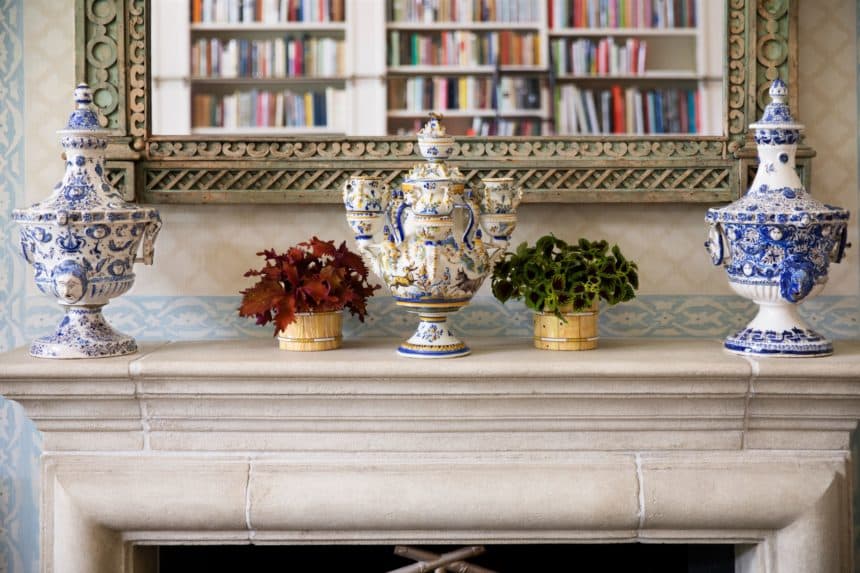
How do you go about arranging these sorts of flowers?
It’s like therapy. It really does wind me down on a Friday night. I’m always telling everyone to leave me alone when I’m in the flower room doing arrangements because that’s my peaceful time, my zen moment.
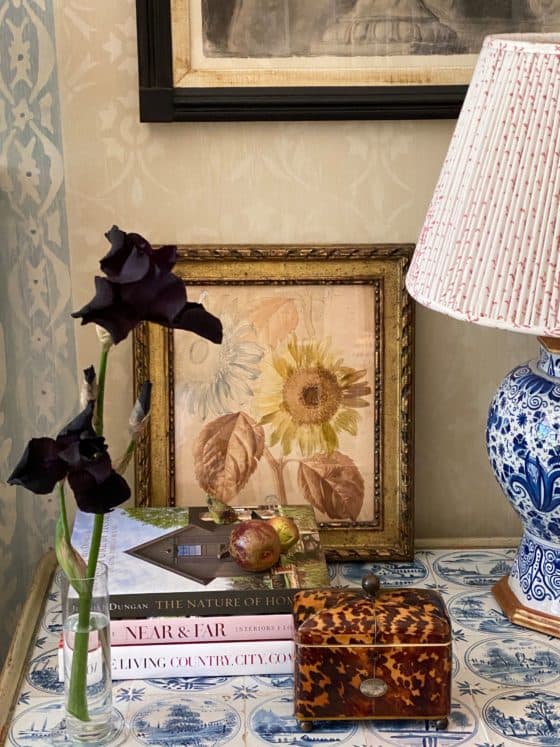 I love the idea of high and low and playing with contrast. I have a great English friend who told me years ago that life is the essential contrast. I’ve taken big huge bunches of goldenrod in Dutch silver, but I’ve also put them in baskets. Certain flowers really do require different things, though. Daffodils, for example, grow in a field together in beautiful masses and they like to be that way in a vase too, just like tulips. Whereas with irises, I mean, all you need is one iris to look incredible. They’re just so sculptural that you don’t need a huge bunch of them. Branches need their space, while roses are probably the most open minded and at the same time, the most sought after, because one works great in a bud vase, a bunch of them is fabulous, and then poking them in a mixed arrangement elevates them.
I love the idea of high and low and playing with contrast. I have a great English friend who told me years ago that life is the essential contrast. I’ve taken big huge bunches of goldenrod in Dutch silver, but I’ve also put them in baskets. Certain flowers really do require different things, though. Daffodils, for example, grow in a field together in beautiful masses and they like to be that way in a vase too, just like tulips. Whereas with irises, I mean, all you need is one iris to look incredible. They’re just so sculptural that you don’t need a huge bunch of them. Branches need their space, while roses are probably the most open minded and at the same time, the most sought after, because one works great in a bud vase, a bunch of them is fabulous, and then poking them in a mixed arrangement elevates them.
I’m curious about the inspiration behind these arrangements. Are you inspired by something you’ve seen in a painting or in one of your designs, or does it kind of just pop out at you when you’re wandering about?
Sometimes it pops out because there’s something nagging at you, like an idea that you haven’t exercised yet. I think we carry ideas around with us from everything that we’ve seen and done and all it takes is that little spark to reignite. If I see wild branches that are curly, it makes me want to do a Constance Spry moment—something gnarly hanging over the side of an urn with big branches. Or maybe all of a sudden it hits you that the little painting that you saw in the Musee d’Orsay had a similar glass vase and the blossoms. But certainly, all the paintings that I’ve seen, all the artists that have followed, they all speak to you in different ways. Whether it’s the wispiness of a Redouté watercolor or in the robustness of a Dutch still life, I think they all have their moments.
